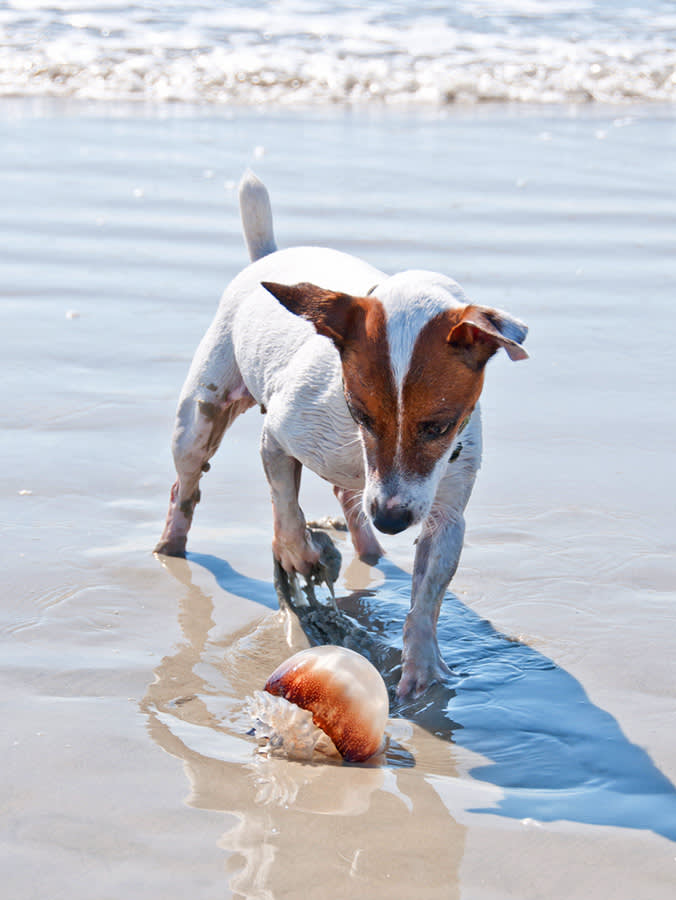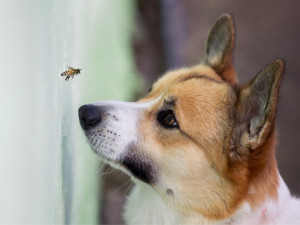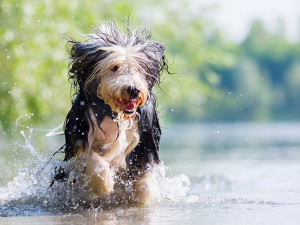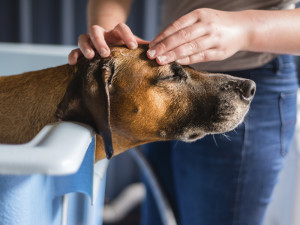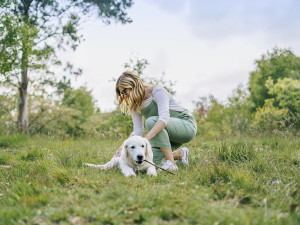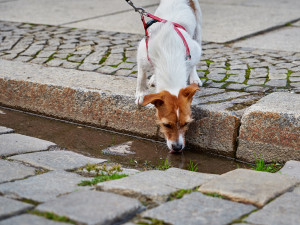A British Guide to the Countryside – For City Dogs
From thorns and grass seeds to more insidious threats such as snake bites and jellyfish stings, there’s a lot to watch out for
Summer is a time of outdoor fun for many of us, including our four-legged family members. But as the temperatures rise and the days lengthen, dog parents in the UK need to be vigilant about the seasonal hazards that can put their pets at risk, particularly if you’re heading out of the comfort of city life into the vast rural areas our little island has to offer.
Whilst the British Isles might not be particularly known for its exotic wild animals, there are still plenty of dangers and hazards to be aware of as a pet parent out in the wilderness during the warmer months; from thorns and grass seeds to more insidious threats such as snake bites and jellyfish stings, there’s a lot to be mindful of.
“There are many outdoor dangers in the UK that are seasonal – from plants to animals, from pollen to algae – there is so much that we need to watch out for!” says Ria Edmensonopens in a new tab, dog trainer and behaviourist. “I would firstly highly recommend doing an in-person first aid course for dogs – it is the most responsible dog owner thing to do and it will never be wasted.”
If you’re one of the 75 percent of dog parentsopens in a new tab planning to take their canine companion on holiday with them in 2024, you should definitely swat up on the potential dangers.
“Dog parents on holiday have more time to explore the countryside, which ultimately leads to exposure to hazards,” says Zoe Blakeopens in a new tab, a veterinary nurse and pet behaviour expert. “In the vet practice, I have seen dogs bitten by snakes, impaled on branches, who’ve trodden on nails and glass, been involved in road traffic accidents and even thrown out of car windows.”
From stings and bites to seeds and branches, here’s our A–Z of some of the common dangers to look out for if you’re heading into the countryside with your dog this summer, and how to keep your dog safe in rural areas.
Adders
Adders are the only venomous snakes native to the UK and, while they are not naturally aggressive, they can bite in self-defence if disturbed. This is particularly problematic for inquisitive dogs bounding through undergrowth, as my in-law’s old Husky soon found out as she ran riot on the sand dunes in Pembrokeshire one summer. (Fortunately, they were able to get help quickly and she made a full recovery).
Adders are more active during the spring and early summer, making now the time to be extra cautious, especially on sunny days. They are found in rural areas across the UK particularly in heathlands, moorlands and coastal areas (less so in the Midlands), so try and keep your dog on marked paths and avoid tall grass, undergrowth or rocky areas, advises Zoe.
If your dog is bitten, it is crucial to act quickly. “In terms of first aid for venomous bites, you want to keep their heart rate as low as possible to reduce spread around the body so keep calm, carry them or avoid them running at the very least,” says Dr Nina Cooke, emergency vet and critical care expert. “Keep the affected limb below the heart and wrap the area in padded ice packs as this will help with inflammation. Get them to the vets quickly.”
“Stay calm and try to limit your pup’s movement to try and stop the venom from spreading,” agrees Zoe. “If you can, carry them to the car or home (however this may be tricky if you have a very large heavy dog).” She offers further advice on what to do if your dog is bitten by an adder:
Seek veterinary help immediately and give them your estimated arrival time.
Do not apply a tourniquetopens in a new tab, attempt to suck out or apply anything to the bite area. It may feel like the most natural thing to do, however it can do more harm than good.
If possible, keep the bitten area below the level of the heart.
Watch for swelling and pain at the bite site, and you may see symptoms such as lethargyopens in a new tab, drooling, vomitingopens in a new tab, diarrhoeaopens in a new tab and even collapse in severe cases. Pale gums, rapid breathing and weakness may also be observed.
On arrival at the vets, your dog should be assessed ASAP and treatment may include anti-venom, pain relief and intravenous fluid.
Bee, wasp and hornet stings
Insect stings are common in the summer, and while bees and wasps are familiar threats, Asian hornets have also been spotted in the UK this year, adding another layer of concern for dog parents. Sure, stings can also happen in cities (unfortunately), but with the variety of wildflowers attracting the attention of buzzing insects it’s best to be even more vigilant when out and about in the countryside. (No one needs a swollen pup faceopens in a new tab).
“Bee, insect and sea life stings (fish, jellyfish etc) are very common and always worth carrying antihistamines with you on walks. Piriton is safe for dogs, so if you see they are stung, get one or two down depending on their size ASAP, and then to the vets,” advises Ria.
For curious pups, try to prevent them from chasing bees or wasps (where possible) and try to limit having things around that may encourage them like fallen fruit and food waste.
“If your dog is stung by a bee and the stinger is still present, scrape it out with a credit card, avoid tweezers as squeezing can actually release more venom,” adds Zoe. “Use a cold pack or a cold water cloth to reduce swelling and pain. Try and discourage your dog from licking or scratching the area – sometimes harder than you think!”
“Observe closely for signs of allergic reaction such as swelling of the face, difficulty breathing, vomiting or collapse. Sadly, like with us humans, we won’t know we are allergic until we are stung!” says Zoe. “Mild reactions can often be treated at home so call your veterinary surgeon for advice as they may recommend over-the-counter treatments. However, if they are showing signs of a severe reaction they may need emergency treatment including steroids and intravenous fluids.”
Blue-green algae
Blue-green algae can be found in stagnant or slow-moving water and poses a severe risk to dogs, even in small amounts. Despite its name, blue-green algae is actually a cyanobacteria and not an algae, but gets its moniker from its algae-like appearance.
“Cyanobacteria are a type of bacteria that can form harmful blooms in freshwater lakes, ponds and slow moving rivers,” says Zoe. “Always avoid water that appears discoloured, has scum or foam on the surface, or smells horrible. Blue-green algae can appear as blue, green, brown or streaky red.”
Symptoms include drooling, vomiting, diarrhoea, twitching, wobbly legs, difficulty breathing, seizures and collapse. Dog owners should avoid allowing their pets to drink from or swim in suspect water bodies, and always be vigilant about the water quality in lakes, ponds and even rock pools at the beach.
“In severe cases it can lead to liver failure, paralysis and death,” says Zoe. “Even small amounts can be fatal so seek immediate medical attention if you suspect your dog has ingested any toxins.”
Jellyfish
As beachgoers flock to coastlines, so too do jellyfish. The gelatinous creatures can pose a significant risk to dogs, in particular for curious pups who might want to investigate washed-up jellies.
“If your dog were to be stung, carefully use a stick or gloves to remove any visible tentacles from their skin first,” says Zoe. “Rinse the area with seawater as this will help to remove the nematocysts. Observe closely for pain, swelling, redness and, in severe cases, vomiting, difficulty breathing and collapse. Call your vet for advice especially if they show signs of a severe reactionopens in a new tab.”
Jellyfish can be found all along the UK coastline, from the south coast to Scotland, but come in waves (literally) depending on currents and warmer weather. Recently, an influx of jellyfish-like creaturesopens in a new tab has been reported on the beaches of the West Country, too. These hydrozoans, called ‘by-the-wind sailors’, don’t have as bad a sting for humans or dogs as jellyfish, but experts are still warning to keep pups away as they can cause severe skin irritation.
Thorns and grass seeds
Whilst frolicking through fields and woods can seem like the absolute dream, dogs can also pick up various natural debris that can cause harm, such as thorns and grass seeds.
“First and foremost grass seeds are everyone’s enemies. Always check your dog’s mouth, ears and in between their paw pads after every walk to be safe,” warns Ria. “In severe cases, grass seeds can travel through your dog’s body to other areasopens in a new tab, such as the chest, and do some serious damage. Another thing to note is that for long haired dogs, this is why it is so important to keep them matt free so you can always see anything that could be harmful.”
If your dog has a grass seed stuck in their paw, ear, nose, eyes or skin, you may notice your dog:
constantly licking their paw
swelling between their toes or pads
limping
shaking their head or pawing at their ear
suddenly and violently sneezingopens in a new tab
has redness, swelling or discharge in their eye
licking at a particular spot on their skin
The trouble with grass seeds, thorns and even shards of sticks or splinters is that any pup can be affected at any point, even the ones with the most prepared of pet parents.
“When I was on holiday with my dog we got dropped off in an area with no signal to go on a two-day canoe tour,” recounts Dr Cooke. “As soon as the driver had disappeared over the hill our dog yelped and hopped back to us with her foot in the air. She had a sharp shard sticking up from under her skin in her foot. At first glance I thought it was a fractured bone, but then soon realised it was a black thorn. We kept her as still as possible and were lucky enough to be carrying some prescription painkillers and antibiotics, which we always carry if we’re doing remote trips. We got Ru to the vets the next day and operated to remove the thorn.”
Weever fish
If you’ve never even heard of a weever fish, I wouldn’t be surprised. But let me tell you, after I was stung on the foot by one on the Welsh coast of all places, I will not be forgetting about them easily, and you shouldn’t either, for the sake of your pup.
The small, spiny fish can cause significant pain (trust me!) if stepped on. They lie buried in the sandopens in a new tab with only their venomous spines exposed, making them a hidden hazard for beach-going dogs. They’re found all around the UK coastline, but most often found on the south and the south-west coasts.
If your dog is stung by a weever fish, they will likely show signs of intense pain and swelling. The best immediate treatment is to immerse the affected paw in hot water, which can help to alleviate the pain and neutralise the venom, says Zoe. “The water should be as hot as your dog can tolerate, but without causing burns. If you can see the spines please remove them carefully with tweezers.” However, a visit to the vet is advisable to ensure that all spines are removed and to manage pain effectively.
How to keep your dog safe in the countryside and on the coast
By being aware of the dangers and taking preventive measures, you can ensure that your dog enjoys a safe and happy summer. Always carry a first aid kit, in particular if you’re in a remote area. If you’re lucky enough to be on your holidays, or in a new place, locating the nearest vet (and their out-of-hours emergency services) before any adventures can go a long way in keeping anxieties at bay if anything were to go wrong.
“If you are in a remote area, it is vital that you are prepared if an emergency takes place with your dog,” says Zoe, echoing Ria’s advice on first aid training. “You should prioritise first aid training, maintain a well-stocked first aid kit and have all up to date phone numbers of which veterinary clinic treats out-of-hours emergencies.”
“Sadly emergencies are not always 9–5, so overnight and weekend assistance may be needed,” she adds. “You should always ensure you have a mobile phone to hand, be prepared for transport and monitor your dog’s condition throughout the journey. It may be an idea to reach out to someone close by that you can trust that can assist if needed.”
Try to keep your dog on marked paths and avoid tall grasses, undergrowth or rocky areas, and never let them out of your sight! (Easier said than done, I know). Brushing up on your recall training and ‘leave’ cues could come in very handy when you come across something that could potentially be dangerous in the wild British countryside.
References
Grass Seeds and Dogs | Blue Crossopens in a new tab (Retrieved 28 May 2024)
Snake bites in dogs - PDSAopens in a new tab (Retrieved 28 May 2024)
Lesser weever fish | The Wildlife Trustsopens in a new tab (Retrieved 30 May 2024)
